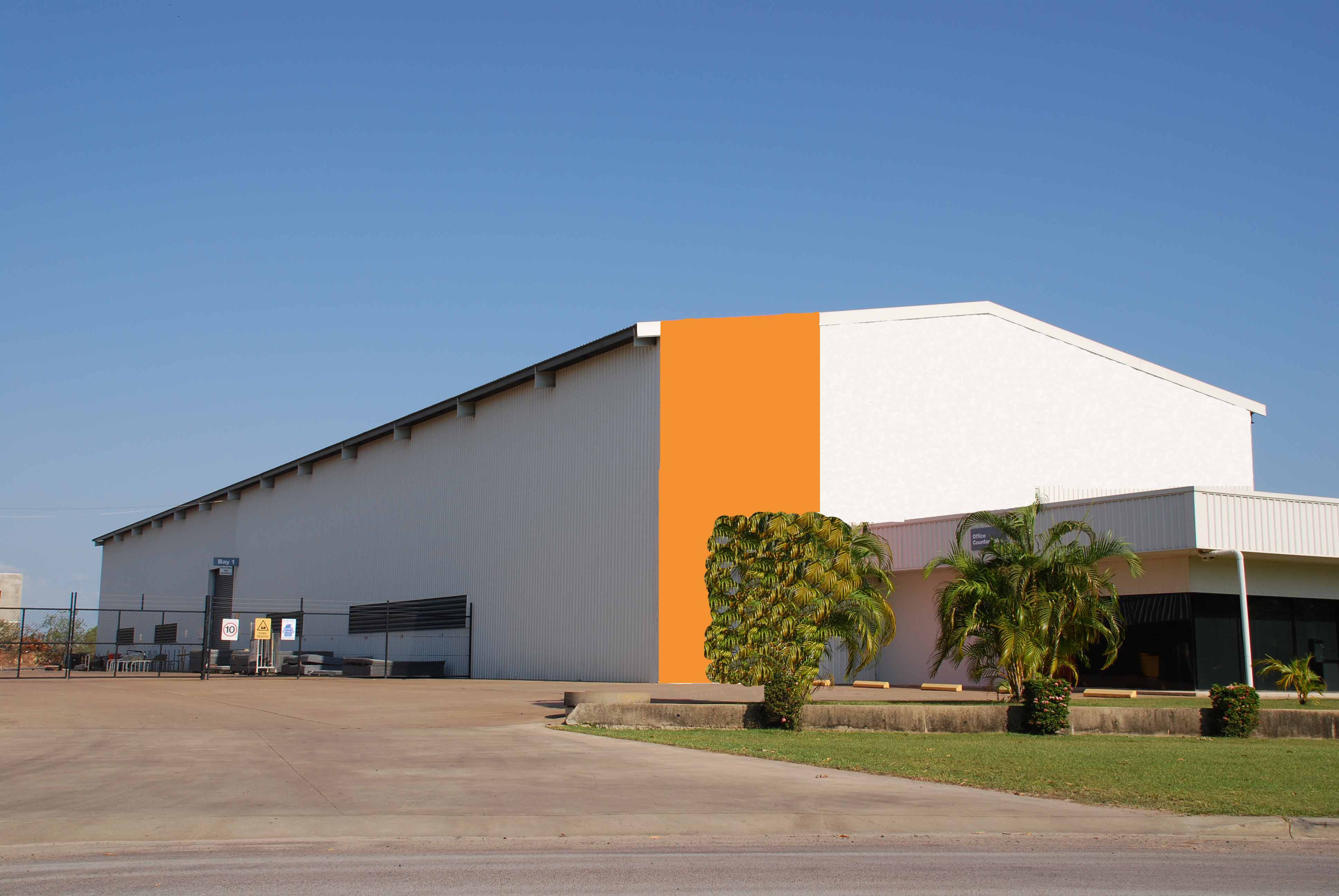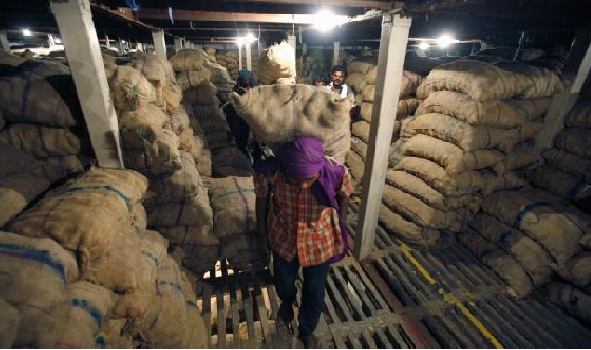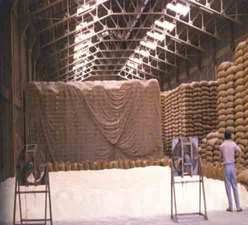Warehousing
Industry Overview
Until decade ago, warehousing in India was a synonym for basic four-walled structures with sub-optimal sizes, inadequate ventilation & lighting, lack of racking systems, poor hygiene conditions and lack of inventory management or technology solutions such as Warehouse Management System (WMS). However warehousing is last decade has shown phenomenal improvement, growth in organized retail and increasing manufacturing activities in India are the key demand generators for warehousing space in India. Presence of extremely affordable and desirable e-Commerce options is also driving the warehousing demand. Further, the growth in international trade is providing huge impetus to the growth in warehousing market. Rising containerized cargo traffic which leads to the growth in CFSs and ICDs adds on to the growth in warehousing sector. Rising income and consumption levels along with increased demand from farmers will further fuel growth of warehouses in India.
Warehousing Demand
Driven by growth in production and consumption, organized retail, logistics outsourcing, modern assets and the likely rollout of Goods and Service Tax (GST), the demand for warehousing space is estimated to grow from 391 mn sq. ft. in 2010 to 476 mn sq. ft. in 2013, growing at 6.8 percent CAGR during this period. Among the key sectors, the highest growth is expected from Engineering Goods and IT, Electronics & Telecom domains since their warehousing demand is estimated to respectively grow at CAGR 8.6 and 8.2 percent during 2010-13. The other sectors are estimated to witness growth rates in the range of 5.7 to 7.1 percent CAGR. (source: KPMG)
Growth Drivers
India has become a manufacturing hub for most industries. The main reasons for this are increasing domestic consumption and the cost-effectiveness of outsourcing manufacturing activities. Some industries have gained tremendous traction over the last few years, cashing in on the ongoing trend of the economy. These include the following:
1. Agriculture
2. Retail
3. Automotive
4. Pharmaceutical
1. Agriculture
is one of the main occupations of India, accounts for about 16% of the GDP. Despite agriculture losing its share in GDP, it is still the largest economic sector. Lately, agriculture has been regaining its sheen, with the government and private entities taking special interest in developing the sector. However, the agriculture supply chain in India suffers from inefficiencies in the supply chain, leading to heavy losses of commodities throughout the country due to lack of proper storage and transportation facilities. It is estimated that about 20% of the foodgrains are destroyed annually because of poor storage facilities.There is a huge gap in the quantity of agricultural produce and the available storage. An estimated cumulative loss of 550 million is expected, owing to the lack of proper cold storage facilities for agricultural produce. The huge gap between the demand and supply of logistics services, which was left unattended due to the unorganised nature of the market, has opened up many opportunities for players in agriculture,
Most supply chain activities for agriculture are handled and controlled by the state-run CWC and FCI or by the unorganised sector. Agricultural produce has to be procured from government designated centres, run inefficiently by middlemen, who operate in cartels. However, the scenario is now changing with the entry of many private and multinational retailers into the market.The advantage of backward integration of their existing activities into the agriculture sector has helped many companies join the fray. This move has encouraged several logistics players to enter the untapped agri logistics market.Players like Shree Shubham Logistics ofthe Kalpataru group, Adani Agri Logistics,SafEx, National Bulk Handling Corporation (NBHC), National Collateral Management Services (NCMSL) and a host of unorganised players have already entered the market by setting up facilities for the agricultural sector. For example,Shree Shubham Logistics Ltd has already established five out of the 11 planned state-of-the-art agri-logistics parks (ALPs) providing world-class warehousing and storage facilities. It will provide cost effective end-to-end supply chain solutions, scientific and reliable storage facilities with support amenities such as weighing, testing and certification.Cleaning, sorting, grading, packaging and funding will be easily available. This will benefit the farming and trading communities as well as corporates. These ALPs are expected to bridge the gap between the demand and supply of the required logistics services. Apart from the logistics companies, even industry houses such as Reliance, Godrej and the Aditya Birla Group are entering the retailing segment of fresh produce and commodity markets. They are building their own warehouses and arranging transportation from farms to retail outlets. With the increasing participation of private players in the market, the agri-logistics market, predominantly an unorganised sector, is expected to consolidate and evolve gradually over time. This consolidation will result in the requirement of huge warehousing capacities with proper infrastructure and seamless backward and forward integration to manage the supply chain.
2. Retail
The retail market in India has been one of the most attractive investment destinations for multinationals and private equities. According to US consulting group AT Kearney’s report published in June 2010, India is the third-most attractive retail market for global retailers among the 30 largest emerging markets. Favourable demographics, rising disposable incomes, increasing urbanisation, relatively low penetration along with large expansions by existing players and the entry of new players are the major drivers of the Indian organised retail market. Though the market slowed down due to the economic downturn, the rebound in late 2009 and consequent recovery in consumer sentiments helped the organised retail industry expand by 25% in 2009-10.
Driven by buoyant consumer demand and the expansion plans of organised retail players, CRISIL Research forecasts the sector to grow at an average annual rate of 23% to ` 3.4 trillion in 2014-15 from ` 1.2 trillion in 2009-10. Consequently, organised retail penetration is likely to increase to 9.1% in 2014-15 from 6.4% in 2009-10.
Increasing industrial investments in manufacturing (near Chennai) and IT investments (in Bangalore and other southern cities) are expected to drive the growth of retailing especially in south India, thus pushing the demand for modern warehouse space. In addition, the increasing relationships of logistics players–DHL, FedEx, Gati, with retail companies–Celio, Pantaloons, Future Group, Danone, are increasing the demand for quality warehousing spaces in India.
The retail segment also demands the highest quality of service from logistics solution providers. Global benchmarks are being increasingly applied to retail operations in India. Not only do logistics service providers require breadth of transportation network but also expertise in storage and value-added services to cater to such a dynamic market.Food retailing has also gained importance in the recent past. India’s food retail sector, worth around ` 3.1 trillion is expected to more than double, to ` 6.7 trillion by 2025, riding on the emerging organised retail as well as the change in consumption patterns along with fast-changing demographics and habits. As food products are perishable, there arises the need for temperature-controlled warehousing and transportation services, thus opening up investment opportunitiesin cold storages for multinational companies and private equity firms.Apart from foods retailing, the changing spending patterns in rural areas have also been attracting retailers to establish their bases in there. As rural areas do not have well-developed infrastructure, retailers are investing in cold storages and customised warehouses nearer to the farms and manufacturing places to avoid damage during transportation and to reduce costs
3. Automotive
The automobile industry in India has attracted much attention due to the sharp increase in the sales of automobiles in the country. In January 2010, total automobile sales in the domestic market reached 1,11,4157 units. The figures show an increment of 44.9% compared to the sales units of 7,68,698 in the same period last year. Annually, the Indian automobile industry is growing at an average rate of 30% and marking itself as one of the fastest-growing industries in India. The market, estimated to have a turnover of over ` 3 trillion in 2011, is expected to grow by 11 to 13% during 2011-12. Now, with the advent of foreign players into the market, the increasing importance of efficient logistics and Just In Time (JIT) services, has made the automotive logistics industry in India evolve much faster as compared to that in other sectors. Almost all players in the automotive industry use 2PL or 3PL for a part of their logistics operations. A trend towards creating a perfect blend of in-house and outsourced service components to effectively manage supply chains is leading to the emergence of 4PL services. Warehousing has been gaining tremendous importance due to the growing need to reduce storage and lead times for inventory. In addition, the concentration of the auto manufacturing activity in a few places has led manufacturers to construct warehouses in strategic locations, which then serves as the central point for distribution and collection of finished and intermediate products including auto parts.
5. Pharmaceutical
The pharmaceutical market is one of the few sectors, which has been relatively resilient during the economic downturn. A highly efficient logistics operation and integrated supply chain is essential to support the growth of the pharmaceutical industry. Most pharmaceutical companies have increased the outsourcing of their logistics functions to 3PLs mainly due to the pressure of lowering operation costs and increasing supply chain efficiency. Logistics costs account for about 45 to 55% of the costs in the pharmaceutical value chain. These costs include packaging, distribution and other value –added services.
More consolidation and integration of logistics operations are likely to happen in the future as customers are constantly looking to outsource their logistics operations to logistics service providers. Pharmaceuticals require highly reliable and safe storage spaces as they are temperature-sensitive and require an environment where temperature range can be pre-defined to accommodate the specific qualifications of the cargo. As Indian pharma companies seek opportunities to supply drugs to the global market, more developed cold-chain management practices will be required to maintain their competitiveness in the market.
Services Provided in Warehousing
1. Techno Feasibility studies for establishing warehouse business
2. Detailed Project Report (DPR’s) on warehouse
3. Operational Management of warehouse
4. Market linkages for existing capacities
5. Turnkey Projects on Warehousing







